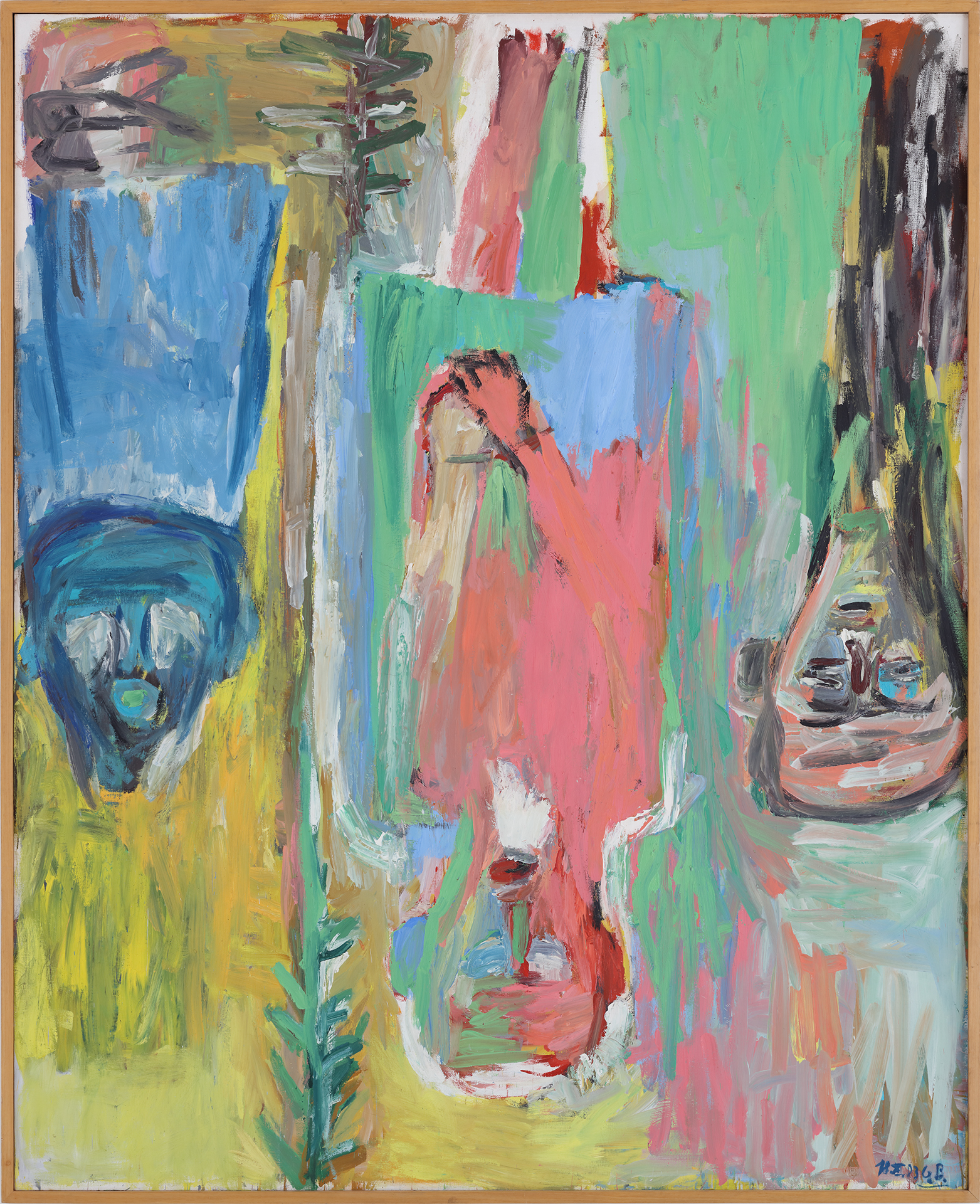Hans-Georg Kern, who was born in Deutchbaselitz, near Dresden, could not accept the political and ideological underpinnings of art, and in 1957 enrolled at the West Berlin university of art. The opening of his first solo exhibition ended in a scandal, with the police confiscating paintings for their “tasteless and pornographic” content. With 1969 a new period started in his art as he turned the motifs upside down. He believes painting is far too autonomous a form to be used as a means to solve social issues, and for art to be valid, it must be uncompromising. Again and again he examines how subjective motifs conceived in specific historical contexts can be rendered anew visually. He seeks to keep his motifs in unity in terms of form, and not narrative, in a way that allows the work to be contentless, objective. In his self-critical works the ceaseless reconsideration of the past gives way to the possibility of re-experiencing time. The Mockery of Christ is another case of upturning the represented figure, which dissolves the conflict of figurative representation and abstraction. By this time BASELITZ had started to spread out the canvases on the ground, and was using mostly his fingers to apply the paint.
K. B.


